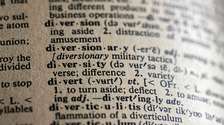Introduction.
Similar to how English learners face difficulties with "good vs well," Spanish learners encounter challenges with "bien vs bueno." That’s why it's important to move away from directly translating bien and bueno, and instead focus on comprehending the grammatical distinctions. By gaining a solid grasp of a few fundamental grammar concepts and recalling typical scenarios where each is appropriate, the use of bien or bueno will become effortless.
1. Bien.
While bien is a common translation for "well", it can also take on meanings such as "very," and "fine."
Working as an adverb, bien has the versatility to modify: verbs, adjectives, or even other adverbs.
The opposite of bien is mal. So, all of the following uses of bien can replaced by mal to express bad situations.
Pay attention! We never use the grammar structure: SER (verb) + BIEN or MAL
1.1 Uses of Bien.
1.1.1. Answering questions.
- ¿Cómo estás? - How are you?
- Bien, gracias, ¿y tú? - Fine, thanks and you?
- ¿Cómo te va? - How are you doing?
- Me va bien gracias - I'm doing well, thank you.
1.1.2. Hablar de la salud.
- ¿Cómo se siente tu hijo hoy? - How is your child feeling today?
Mi hijo no se siente bien - My son is not feeling well.
- ¿Cómo te encuentras hoy? - How are you feeling today?
Me encuentro muy bien. Gracias. - I feel very well. Thank you.
Note that in this context when talking about health, bien can also be used with the verb ‘estar’ when we know that someone was sick.
1.1.3 Emphasizing an adjective.
If you add the adverb bien in front of an adjective, you emphasize it:
El partido fue bien duro. - The match was very tough. (Emphasizing the adjective ‘duro’)
Previously, I asked for your attention not to use the structure: SER (verb) + BIEN, however the above sentece is using SER verb ‘fue’ (simple past) plus adverb ‘bien’. Well, here it’s an exception: when bien has the same meaning of ‘very’, only in this case, we can use it.
Please don’t say: La comida es bien. Nosotros somos bien. Los niños son bien.
We need to add an adjective:
La comida es bien buena. The food is very good. (Emphasizing the adjective ‘bueno’)
Nosotros somos bien listos. We are very smart. (Emphasizing the adjective ‘’listo’)
Los niños son bien traviesos. The kids are very naughty.(Emphasizing the adjective ‘travieso’)
1.1.4 Emphasizing an adverb.
It’s the same case above, but emphasizing an adverb instead of an adjective:
Comes bien rápido. - You eat very fast. (Emphasizing the adverb ‘rápido’.)
Tu casa está bien lejos - Your house is very far away.(Emphasizing the adverb ‘lejos’.)
1.1.5 Describing the action of a verb.
Compare with the previous sentences:
Comes bien. - You eat well. (Describing how you usually eat.)
Tu casa está bien - Your house is fine.(Describing how your house looks.)
1.1.6 Introducing a pause.
You can use the word bien to begin a sentence if you want to include a pause that emphasizes what you are about to say. Using bien to start sentences is far more common in speech than writing.
Si hoy no vienes a trabajar, bien, serás despedido.
If you don't come to work today, well or fine, you'll be fired.
Mi jefe piensa que es el mejor. Bien, su arrogancia no duarrá mucho tiempo. -
My boss thinks he is the best. Well, his arrogance will not last long
1.2 Expressions with Bien.
- ¡Bien! Ganamos el partido de fútbol - We won the football match. Bravo ! Yahoo !
- ¿Todo bien? — Is everything all right?
- ¡Bien hecho! — Well done!
- Ahora bien — However, having said that
- Está bien — It’s okay/fine, all right
- Bastante bien — Quite well
- Caer bien — To make a good impression, to be liked by
- Portarse bien — To behave well
- Ir bien — To go well
- Ni bien ni mal — So-so
2 Bueno.
Bueno is an adjective. It has four forms that always have to agree in gender and number with the noun it refers to.
The opposite of bueno is malo. So, all of the following uses of bueno can replaced by malo to express bad situations.
- Bueno. Malo (masculine singular)
- Buena. Mala (feminine singular)
- Buenos. Malos (masculine/mixed plural)
- Buenas. Malas (feminine plural)
Although the first meaning for bueno you will see in the dictionary is “good,” it can also mean “tasty,” “useful,” “beneficial” and even “hello!”
2.1. Bueno vs. Buen.
The initial point to understand is that bueno and buen are essentially two aspects of the same word.
Their meanings are identical; however, their placement within a sentence differs.
Bueno is used after a masculine singular noun, but this word also has the possibility of appearing in front of the same masculine singular nouns. In this case, bueno has to lose its final -o in order to be able to be in that position:
Es un niño bueno. (He is a good child.) → Es un muy buen niño. (He is a good child.)
Es un pan bueno. (It is a tasty/good bread.) → Es un buen pan. (It is a tasty/good bread.)
The same case is used to express bad situations: mal by malo.
Es un niño malo. (He is a bad child.) → Es un mal niño. (He is a bad child.)
Es un pan malo. (It's bad bread.) → Es un mal pan. (It’s bad bread.)
The shortened form is more commonly used.
2.2. Uses of Bueno.
It’s used bueno or buen in the following cases:
2.2.1. When a person or an animal displays good behavior.
Los perros son muy buenos. Nunca ladran. - The dogs are very good. They never bark.
Tu hijo tiene muy buen comportamiento en clase. Pero el mío se comporta muy mal.
Your son has very good behavior in class. But mine behaves very badly.
2.2.2. When a person fulfills their duty accurately.
Tú eres muy buena madre.- You are a very good mother.
Pedro es un buen jefe. - Peter is a good boss.
2.2.3. When something proves advantageous for you.
Fumar no es bueno (es malo) para la salud. - Smoking is not good (is bad) for your health.
Hacer ejercicio todos los días es muy bueno. - Exercising every day is very good/beneficial.
2.2.4.When the quality of an object is high.
Esta computadora es de buena calidad. - This computer is of good quality.
El coche es de buena calidad - The car is of good quality
2.2.5. When someone is attractive.
Juan está muy bueno. - John looks sexy.
Tu vecina está muy buena. - Your neighbor looks sexy.
2.2.6. When the answer to a question is okay, sure, fine or all right.
This is the only scenario in which you can freely interchange bien and bueno without raising any eyebrows.
Nos vemos mañana a las ocho de la tarde en tu casa. - See you at eight p.m. in your house
— Bueno or Bien - Okay
2.2.7. When something is tasty.
Esta ensalada está muy buena. - This salad is really tasty.
Este pescado no está bueno. Está crudo. - This fish is not good. It's raw.
2.3. Expressions with Bueno.
- Bueno — Well, so
- ¿Bueno? — Hello? (on the phone)
- ¡Bueno! — Enough already!
- ¡Qué bueno! — Tasty! Awsome! Good to know!
- Ser bueno en algo — To be good at something
- Bueno para nada — Good for nothing
- Dar por bueno — To give the go-ahead
- En las buenas y en las malas — Through thick and thin
- Por muy bueno que sea — As good as it might be
- Sacar lo bueno — To look on the bright side
And as they say, “todo lo bueno se acaba”, all good things must come to an end.
I hope the article helps you use bien and bueno properly to sound like a native Spanish speaker.
Feel free to write any questions or comments below.
If you want to practice this topic deeper, or any other one, let's go to start an iTalki classroom. I am more than happy to help you.
Thanks for reading.
Antonio







